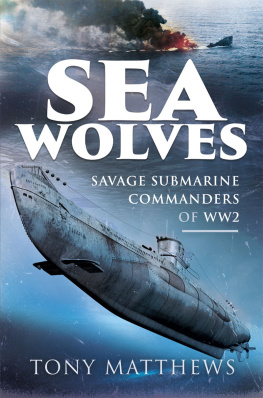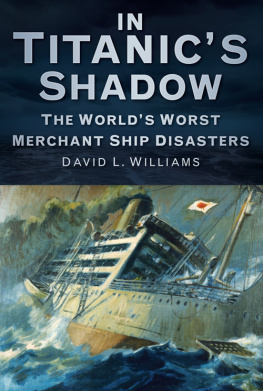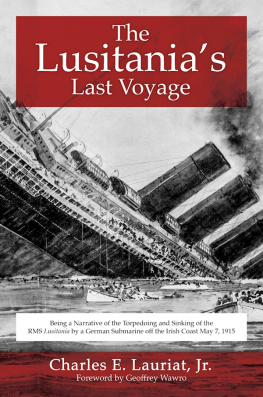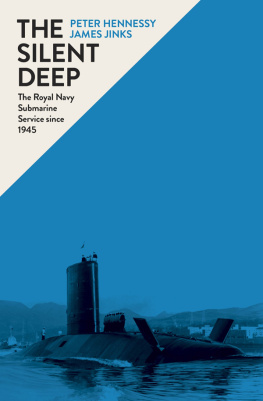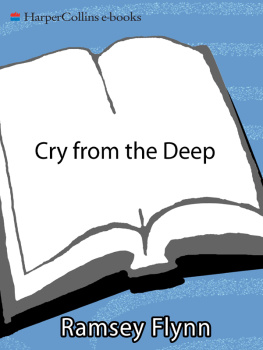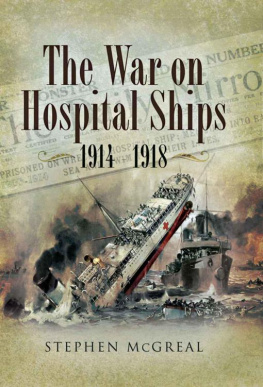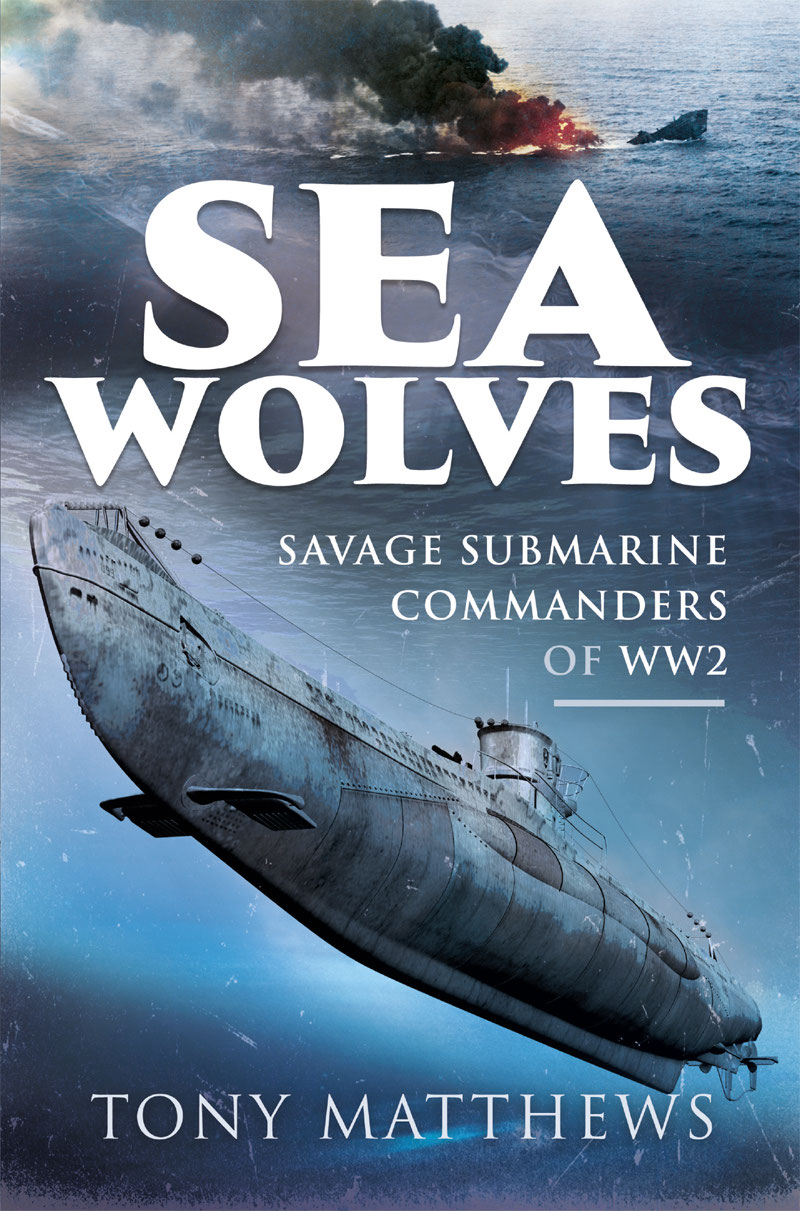Sea Wolves
Sea Wolves
Savage Submarine Commanders of WW2
Tony Matthews
First published in Australia in 2021 by Big Sky Publishing
www.bigskypublishing.com.au
First published in Great Britain in 2023 by
Pen & Sword Maritime
An imprint of
Pen & Sword Books Ltd
Yorkshire Philadelphia
Copyright Tony Matthews 2023
ISBN 978 1 39906 461 3
eISBN 978 1 39906 463 7
Mobi ISBN 978 1 39906 463 7
The right of Tony Matthews to be identified as Author of this work has been asserted by him in accordance with the Copyright, Designs and Patents Act 1988.
A CIP catalogue record for this book is available from the British Library.
All rights reserved. No part of this book may be reproduced or transmitted in any form or by any means, electronic or mechanical including photocopying, recording or by any information storage and retrieval system, without permission from the Publisher in writing.
Pen & Sword Books Limited incorporates the imprints of Atlas, Archaeology, Aviation, Discovery, Family History, Fiction, History, Maritime, Military, Military Classics, Politics, Select, Transport, True Crime, Air World, Frontline Publishing, Leo Cooper, Remember When, Seaforth Publishing, The Praetorian Press, Wharncliffe Local History, Wharncliffe Transport, Wharncliffe True Crime, White Owl and After the Battle.
For a complete list of Pen & Sword titles please contact
PEN & SWORD BOOKS LIMITED
47 Church Street, Barnsley, South Yorkshire, S70 2AS, England
E-mail: enquiries@pen-and-sword.co.uk
Website: www.pen-and-sword.co.uk
Or
PEN AND SWORD BOOKS
1950 Lawrence Rd, Havertown, PA 19083, USA
E-mail: Uspen-and-sword@casematepublishers.com
Website: www.penandswordbooks.com
Dedication
This book is dedicated with love and admiration to my wife, Lensie.
Contents
Acknowledgements
Special mention must be made of my wife, Lensie, to whom this book is dedicated. She has worked tirelessly in assisting with the many facets of the production of this book including the photographic restoration, typesetting and indexing. For her devotion and encouragement I shall ever be grateful.
The author would also like to thank and acknowledge the following people and organisation who have assisted and have been instrumental in the research and development of this book.
Australian War Memorial
Bundesarchiv, Germany.
John Oxley Library, Brisbane.
Holly Reed, U.S. National Archives & Records Administration, Still Picture Reference Team.
Pamela Overmann, Curator, Navy Art Collection, U.S. Naval History and Heritage Command.
Jonathan M. Roscoe, Archivist, U.S. Naval History and Heritage Command.
U.S. Office of War Information Collection, U.S. Library of Congress.
Edward Petruskevich, Curator, Wilhlem Gustloff Museum.
Keith Clegg
Introduction
This is the story of four of the most dangerous submarine commanders of the Second World War. Two of them were Japanese, one was German and the last was a member of the Soviet Navy. These men between them killed an almost uncountable number of innocent civilians during their war operations and only one was actually punished in any significant way for his crimes.
The book begins with Hajime Nakagawa, commander of the Japanese submarine I-177 in May 1943. Nakagawa was responsible for sinking the Australian hospital ship, Centaur at a cost of 268 lives, all of whom were either civilian crew members or members of the ships medical staff or an ambulance unit of the Australian Army. All were non-combatants protected by the Geneva Convention as was the ship itself which had clearly been marked as a hospital vessel and was travelling with the full protection of international law.
Why Nakagawa sank a protected hospital ship is a moot point which is discussed in detail in this book but he was never punished for this war crime. Later in the war, as commander of another Japanese submarine, the I-8, he was responsible for sinking freighters in the Indian Ocean and deliberately machine-gunning survivors in the water. This book details how these events occurred, why they occurred and what we know of Nakagawas fate after the war.
In the second chapter of this book the author looks at the unique case of German submarine commander Heinz Eck a handsome, well educated young man with a good family background and everything to live for. Yet despite his obvious attributes and intelligence, Eck was to become the only Nazi U-boat commander to be convicted of war crimes after the war.
Heinz Eck had been in command of the new and particularly powerful submarine U-852, when it was sent to the South Atlantic to prey upon Allied shipping in the region. This was Ecks first command of a submarine. He had been warned beforehand of the immense dangers which faced him and, at this time in the war, 1944, these dangers were immense. All the submarines that had recently been sent into this region had been destroyed by the intense Allied air presence in the zone and Eck fully realised that he was facing almost impossible odds. In fact the odds were really against him. Every German submarine that had already been destroyed in this area had been commanded by an experienced, battle-hardened captain. Almost all of them had come through the highly dangerous years of the war in the North Atlantic where countless numbers of ships and submarines had been sunk. All these commanders had been decorated for their successful service. Yet even these seasoned professionals had failed when sent to operate in the South Atlantic with its incredible Allied air power coupled with a strong presence of warships, particularly aircraft carriers.
What hope could Captain Eck have in such a perilous place when this was his first war patrol and his first command?
Ecks successes, if they could be called that, were modest. He sank only two ships including the SS Peleus, after which he callously killed almost all the survivors in the water with machine-guns or through the use of hand-grenades. Why he did so formed part of one of the more tragic stories of the war and led to one of the first war crimes trials to take place following the cessation of hostilities in 1945.
In chapter three the author investigates the astonishing story of Japanese submarine commander Tatsunosuke Ariizumi and the particularly brutal events that followed the sinking of two ships, the SS Tjisalak on 26 March, 1944, and the SS Jean Nicolet on 2 July that same year. What makes this story unique is the sheer, single-minded brutality of events following the sinking. The survivors were not simply machine-gunned in the water, in fact they thought for a while that they were being rescued by the submarine that had sunk their ships, but as soon as they had been brought on board the enemy vessel, Ariizumi had launched a bestial wave of torture and murder on the survivors including at least one woman, which would echo in tragedy and horror for decades to come.
The one Allied submarine commander to take his place within the pages of this book is the Russian naval officer Captain Alexander Marinesko, whose story as the commander of the Soviet submarine S-13 is told in all its appalling detail in chapter four. Marineskos toll of death far exceeds any other submarine commander in history. He was responsible for sinking two former liners, the massive Wilhelm Gustloff and the Steuben, both of which he torpedoed in the Baltic Sea early in 1945, only months before the war ended. No one today really knows how many people were killed in these two tragic events. The Wilhelm Gustloff, upon leaving Gdynia, Poland, on 30 January, 1945, had so many people crammed on board that it had been impossible to count them all. These people were comprised mainly of refugees fleeing the coming Russian onslaught and also a large number of wounded German soldiers and nursing staff. On board the ship that day were also around five thousand children. When Marinesko slammed his torpedoes into the ship later that night he was fully aware that the vessel was crowded to capacity with civilians and wounded, yet he was perfectly willing to send the ship to the bottom of the Baltic at the cost, in some estimates, of around nine thousand lives, a large number of them being children who were either killed in the blast, drowned or frozen to death in the bitterly cold sea that night. Some of the bodies were later discovered frozen solid into ice-floes.

